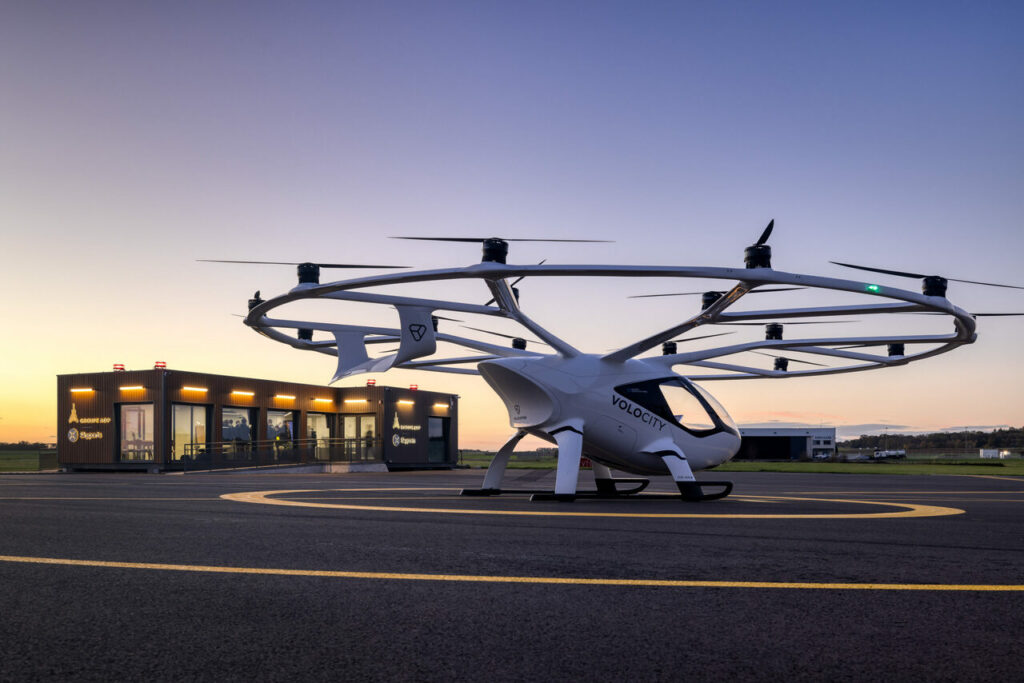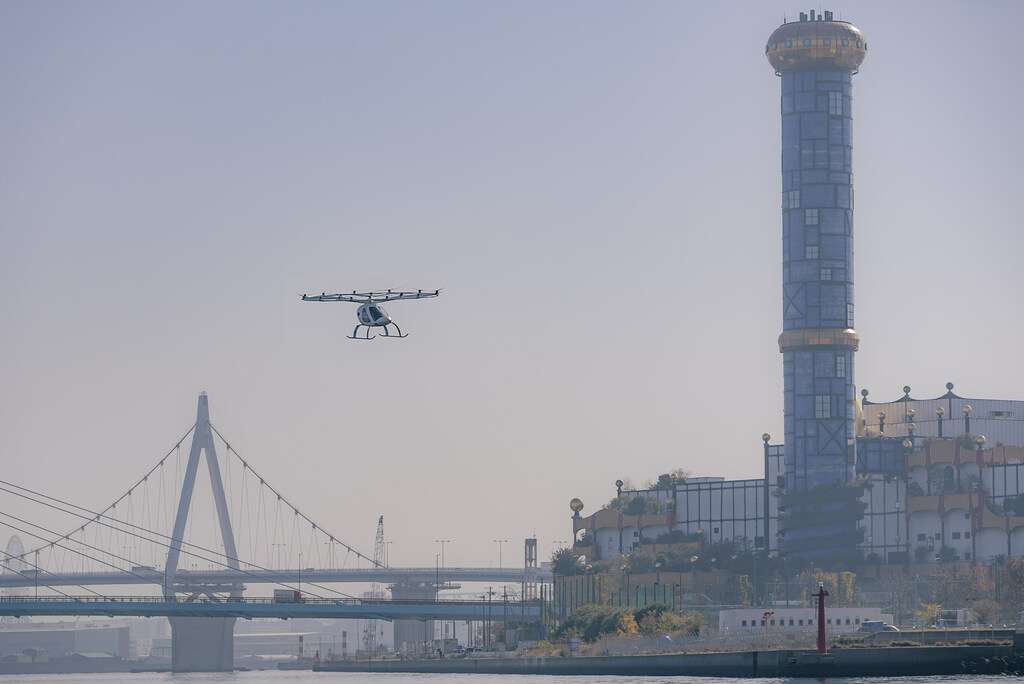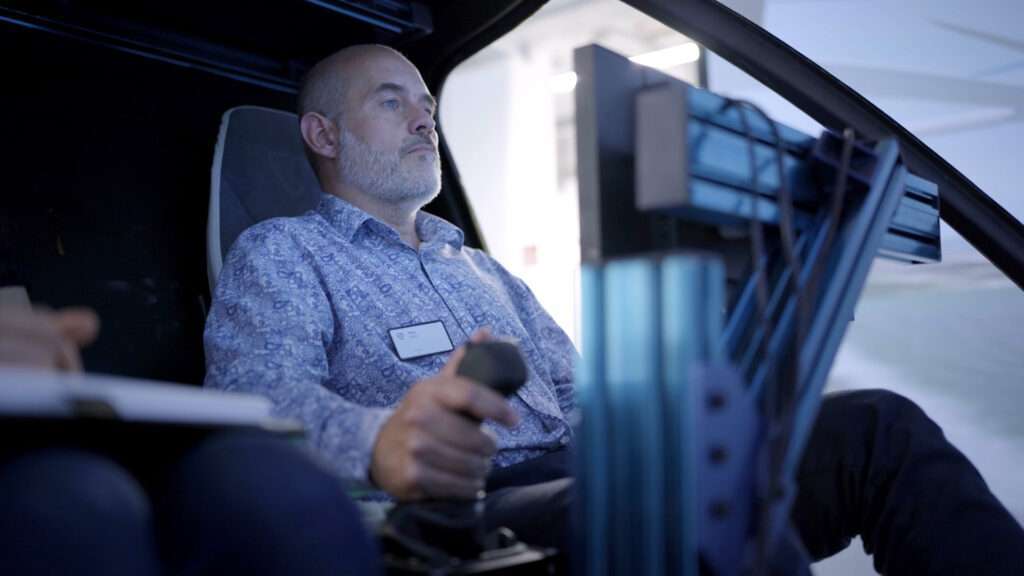Volocopter, a player in the emerging field of urban air mobility (UAM), has achieved a recent significant milestone.
It has become the first electric vertical take-off and landing (eVTOL) aircraft developer to be awarded Approved Training Organisation (ATO) certification by the German Federal Aviation Office (Luftfahrtbundesamt).
This achievement marks a crucial step towards the commercial launch of electric air taxis later this year.
ATO Approval for Pilot Training
The ATO certification signifies that Volocopter has met the rigorous standards set by the aviation authorities to train pilots for its innovative VoloCity aircraft.
This comprehensive training program will equip pilots with the necessary skills and knowledge to safely operate these futuristic vehicles.
The certification process involved a thorough year-long audit by the Luftfahrtbundesamt. This oversight ensured that Volocopter’s training materials and simulators adhered to the mandated aviation regulations.

This green light from the authorities paves the way for Volocopter to finalize the training program in collaboration with the German aviation office.
This will incorporate the newly established EASA regulations for eVTOL operations and pilot licensing.
“This is a significant milestone on the path to bringing electric air taxis to cities worldwide,” said Oliver Reinhardt, Chief Risk and Certification Officer at Volocopter.
“It reflects the dedication and expertise of our entire team and underscores Volocopter’s position as a leader in the urban air mobility industry.”

Volocopter’s Role in Urban Air Mobility
Volocopter has been at the forefront of developing electrically powered air taxis designed to revolutionize urban transportation.
The company received the Design Organisation Approval (DOA) from the European Union Aviation Safety Agency (EASA) in 2019. In so doing, it becomes the first eVTOL developer to achieve this distinction.
This, coupled with over a decade of experience in the field, solidifies Volocopter’s position as a frontrunner in this rapidly evolving sector.

The ATO certification is a critical piece of the puzzle for Volocopter, as it prepares for the next stage: obtaining the Air Operator Certificate (AOC).
This authorization will allow the company to commercially operate its electric air taxis once the VoloCity aircraft receives type certification. This is now anticipated to take place later this year.
With the successful completion of the ATO certification, Volocopter is well on its way to realizing its vision. The goal is to transform urban transportation through innovative and sustainable electric air taxis.
UAM refers to the use of electric vertical take-off and landing (eVTOL) aircraft for transporting passengers and goods within and around cities.
This emerging field holds the potential to revolutionize urban transportation, addressing challenges like traffic congestion, pollution, and limited infrastructure.

The Rise of UAM
- Technological advancements: The rise of UAM is largely driven by breakthroughs in electric propulsion, battery technology, and autonomous flight control systems. These advancements have enabled the development of quieter, cleaner, and more efficient eVTOL aircraft.
- Growing urban populations: An increasing number of people are residing in cities. The demand for efficient and sustainable transportation solutions is subsequently growing rapidly. UAM offers a promising alternative to traditional ground-based transportation, potentially reducing travel times and congestion.
- Investment and innovation: The UAM industry is attracting significant investments from major companies and startups. This fosters rapid innovation and development of new eVTOL designs and business models.
Current State and Future Potential
- Early stages: While still in its early stages, UAM is making significant progress. Several companies are conducting test flights and developing prototypes, with some aiming for commercial launch in the coming years.
- Regulation and infrastructure: Establishing robust regulations and infrastructure for safe and efficient UAM operation is crucial. Governments and aviation authorities are actively working on developing frameworks to address these challenges.
- Social acceptance: Public perception and acceptance of UAM will play a vital role in its long-term success. Addressing concerns about safety, noise, and privacy is essential for gaining public trust and support.
Click the banner to subscribe to our weekly newsleter.
]
Click the photo to join our WhatsApp channel so then you can stay up to date with everything going on in the aviation industry!










